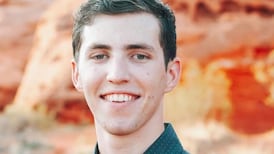Despite much publicity about this bone-wasting disease, early diagnosis remains a problem. Sylvia Thompson reports
Every 30 seconds, one person in the European Union has a fracture due to osteoporosis.
The importance of building up and maintaining healthy bones throughout one's lifetime has been slowly gaining more attention as the world wakens up to the painful and debilitating effects of osteoporosis.
The bone-wasting disease, which was only officially defined as a disease by the World Health Organisation in 1994, is believed to affect one in three women and one in five to eight men over the age of 50. It can also affect younger women, particularly if they have suffered from an eating disorder, had an early menopause or taken corticoids medication for long periods of time.
Yet, in spite of publicity campaigns aimed at the medical profession and the general public, many, many patients have osteoporosis for years before diagnosis. Due to the absence of symptoms, diagnosis is often made only after someone has suffered one or more fractures to their wrist, hip, spine, pelvis or upper arm.
Speaking at an international gathering of osteoporosis experts in Copenhagen, Denmark last week, Daniel Navid, chief executive of the International Osteoporosis Foundation, said, "The direct cost of hospitalisation of patients across Europe and North America due to osteoporosis is $56 billion [ €43.5 billion] a year. This is more than the foreign aid budgets for all countries combined.
"Most of this suffering and cost could be avoided as osteoporosis is not just a consequence of growing old. It can be treated and preventative measures can be taken."
The number of hospital beds occupied due to osteoporosis fractures in the EU is expected to double in the next 50 years.
Preventative action against osteoporosis for people of all ages include ensuring adequate dietary intake of calcium and vitamin D combined with regular bouts of weight-bearing exercise.
"The disease can be easily diagnosed [a recent Irish campaign highlighted the use of the DEXA scan to measure bone health] and there are many treatment options available. The problem is lack of awareness and lack of government action," Navid said.
He cited a 12-country study which found that although a large percentage of women had heard of osteoporosis, only two in 10 believed it could ever affect them personally. One in 10 women whose mothers had been diagnosed with osteoporosis after breaking bones following falls, also did not believe they were at risk.
There is a genetic component in approximately 50 per cent of cases of osteoporosis and those women and men who seek out early diagnosis due to family risk factors can receive drug treatment with biophosphonates which will reduce the likelihood of fractures in later life.
Daniel Navid was one of a panel of speakers at the Danish launch of Osteoporosis - A Photographic Vision, an international touring exhibition of three-metre tall black and white images of osteoporosis patients, photographed naked by controversial Italian photographer Oliviero Toscani. Principally a fashion photographer, Toscani gained worldwide renown for his work on Benetton campaigns.
The aim of the exhibition, which has so far been shown in Italy, Portugal, Spain, Belgium, Sweden, Finland and Denmark, is to alert the general public to the effects of the disease.
At the opening of the exhibition in Copenhagen, a number of female sufferers of the disease paraded on a 'catwalk' while their doctor described how osteoporosis has limited their quality of life. Many couldn't carry shopping bags, lift their grandchildren, do housework or gardening. Others had suffered from constant pain due to injury or damage to their spine, arms or hips.
Through his photographs, Toscani captures the physical fragility and deformity caused by osteoporosis without humiliating those photographed in any way. His photographs of 23 patients - including one Irish patient - have been described as provocative yet respectful. There are no plans as yet for the exhibition to come to Ireland although Daniel Navid from the IOF hopes that it will.
The Irish Osteoporosis Society can be contacted on tel: 01 6774267. See also www.irishosteoporosis.ie and www.osteofound.org







